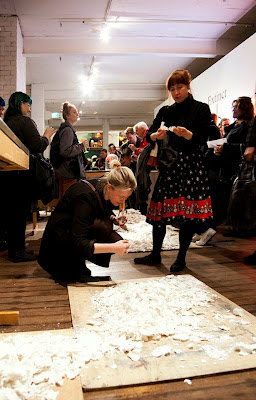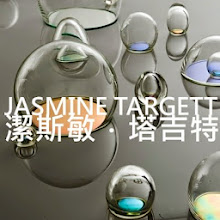Crumbling Ecologies interrogates
the impact of the economic climate on both environmental conservation and arts
education in Melbourne. In times of economic crisis both art and conservation
funding is cut, raising questions on their value to culture and society.
A response to the ongoing threatened closure of many media specific courses across Victoria, the works examine the relevancy of these materials within contemporary arts practice and the impact the loss of educators will have on Melbourne’s artistic culture.
In many parts of the world
there are species of geranium that are critically endangered or extinct. In
Australia the garden geranium is on the Australian National Heritage Trust’s Alert List for Environmental Weeds that
threaten biodiversity and cause environmental damage. Soon to become a huge
pest to Victoria’s native flora and fauna, they are one of the most popular
commercially sold garden plants.
In Melbourne, geraniums sit
ambiguously between a plant and a weed deriving connotations of being out-dated
and old fashioned. One of the key arguments used to justify the closure of the
craft studios is that these materials and practices have become out-dated and
no longer relevant to contemporary arts practice and research.
This use of Geraniums signifies the economic impact on the ecological equilibrium and the importance of actively preserving craft as a diverse form of contemporary arts practice.
Weather Barometer, 2012.
Neon and Vinyl.
Height 124cm x Width 10cm x Length 600cm
Jasmine Targett
The IUCN Red List of endangered species uses the chart depicted in Weather Barometer to categorise the rate of a species’ decline from Least Concern to Extinct. It can be suggested that by these classifications Craft is a Critically Endangered form of arts practice in Victoria. This is the highest risk category and indicates a species’ numbers will decrease by 80% within three generations.
The closure of craft based studios from Higher Educational Intuitions across Victoria will mean that the next generation of artists working in Melbourne will no longer have the resources to learn the technical skills necessary to practice craft professionally, dramatically altering the diverse landscape of Australian visual art.
Weather Barometer charts the current state of Craft as CR, perhaps ironically CR is also the abbreviation for Craft used by state and national funding bodies. The flickering light of EW explores the sense of urgency around the future of craft. Traditionally weather barometers have been used to alert the public to extreme weather conditions or in fundraising, to chart the level of funds raised. This conceptually links the instability of the current financial to the closure of Victoria’s Craft Studios.
CR – Critically Endangered
EW – Extinct in the Wild
Crumbling Ecology, 2012.
Thousands of life size porcelain geranium leaves.
The last work to emerge from the now ‘devolved’ Monash Ceramic Studio, Crumbling Ecology is a large ephemeral installation made from over 35,000 hand made porcelain geraniums.
On the brink of crumbling, the porcelain geraniums embody the story of their makers- the artists, teachers and students directly impacted. Porcelain is a material known for its strength; using the material in this way comments on the loss of educators and the knowledge their hands pass on. Commenting on the beauty and integrity of craft that is soon to be lost, the ecology unable to regenerate, sits within a tenuous space. The outcome of the work and its value will be determined by the audience’s response...
Viewers are invited to take a leaf and pay what you think it is worth.
This work has been made by Jasmine Targett with the assistance of over 100 volunteering artists, crafters, students, teachers, curators and creative fellows in Victoria and New South Wales.
The Makers –
VIC
Jasmine Targett, Sally Cleary, Rebecca Mayo, Anthony Conway, Caroline Brandt, Jacinta Richardson, Stephanie Watson, Thomas Ryan, Atika Fraval, Janice Kent-Mackenzie, Rebecca Norris, Phoebe Norris, Shelley Grayden, Susannah Larritt, Cat Finnerty, Ian Wadley, Rebecca Delange, Adele Macer, Annette Martin, Julia Storey, Wen Shobbrook, Annie Quail, Elise Sheehan, Naomi Troski, Ri Van Veen, Lucy Hall, Sophie Harle, Ella Leoncio, Susan Frisch, Georgia Lancaster, Rosanna Cladwell , Kobie Nel, Ulla Britta Westergren, Kathryn de Jesus, Di Richardson, Jenna Wilson, Gabbie Hoff, Beka Hannah, Pauline Meade, Carmen Couche, Yanrong Wu, Simone Steel, Suse Scholem, Sinead Kennedy Tammy Warner, Annie Dowd, Miriam McGarry, Sari Harris, Sharyn Masson, Kristen Miller, Dee Strandly, Rachel Berry, Jacqueline Vermer, Cindy Leech, Declan Donald, Friederike Heinsdorff-Neill, Kim Davis, Sue Lawson and Laura Elphinstone.
NSW
Liane Rossler, James McCallum, Bridget Kennedy, Corrine Fisher, Hannah Fisher, Emilie Fisher, Jude Belnick, Maddy Ghosh, Ximena Tapia, Zeynep Bayraktar, Canbora Bayraktar, Rose Daridis, Brooke Thompson, Beau Thompson, Lucie Macany, Zoe Brand, Melanie Ihnen, Nina Still, Tilly Torrevillas and Ayla Ihnen.
The Beauty of Weeds, 2012.
Regenerated plant waste, hand blown glass and salvaged furniture from ‘devolved’ studio space.
Series of three tables - each table installation size Height 120cm x Width 90cm x Length 130cm
Jasmine Targett
The Beauty of Weeds explores the indefinite boundaries between artwork and artefact. In the installation salvaged furniture from 'devolving' studios have overnight become a relic of a crafts no longer practiced. Somewhere between art school, gallery and museum, these relics echo the ambiguity facing the displaced students.
Traditional museum bell jars house regenerated plant waste cultivated from the casting process in the exhibition’s central work Crumbling Ecology. What will grow from the education that was passed onto us while working at these desks is unknown. Hopefully something good will grow from this.
The Beauty of Weeds is that “a weed is a plant that has mastered every survival skill” [1]... they just keep growing.
[1] Doug Larson – Door County Advocate USA



















No comments:
Post a Comment